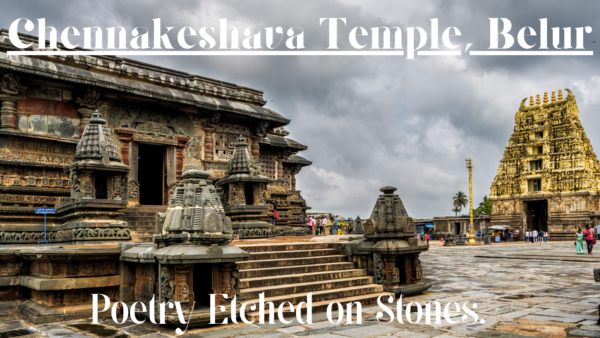The architectural heritage of India knows no bounds. This is especially true for the southern parts of our country. You will be amazed to find a brilliantly carved temple at the heart of an otherwise nondescript town or village in south India. Belur is one such example. This sleepy town boasts the presence of the impressive Chennakeshava Temple.
The Chennakeshava Temple is the illustrious handiwork of Hoysala architects and sculptors. Every bend and corner of this temple has rich carvings, that will leave you starstruck. As you tread the temple’s pathway, you will be amazed by the host of stellar sculptures, which will ultimately make you realize how rich our heritage has been.
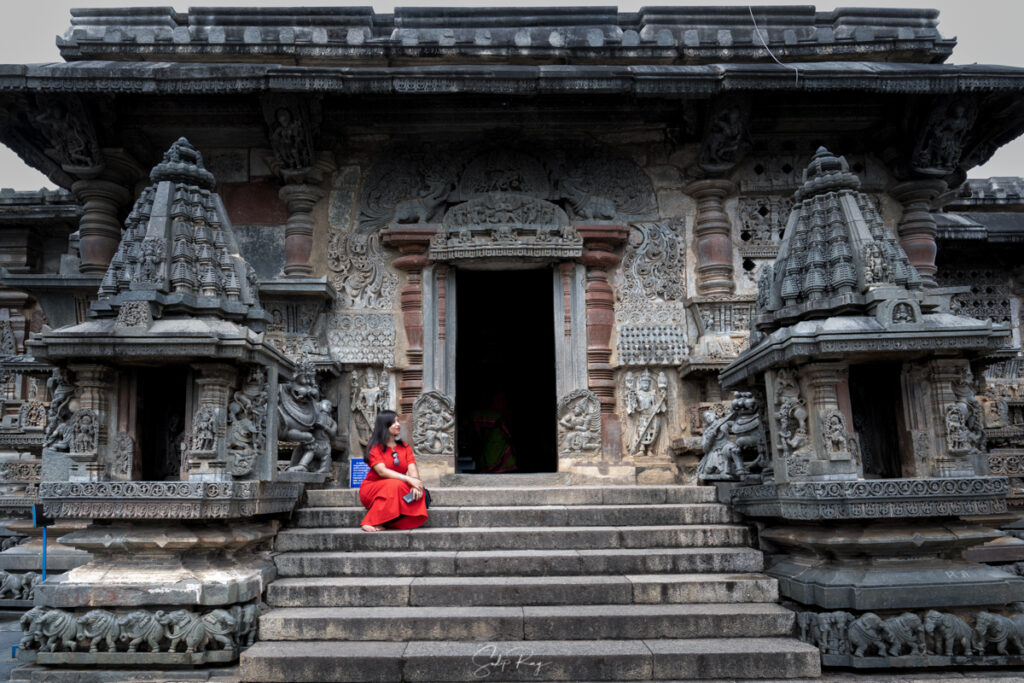
Table of Contents
Where is Belur located:
Belur is situated in the Hassan district of Karnataka. Belur is 200 km away from Bengaluru, and 149 km from Mysuru.
Why you need to visit Belur:
Belur houses the stunning and exquisite Chennakesava Temple, one of the finest examples of Hoysala temple architecture.
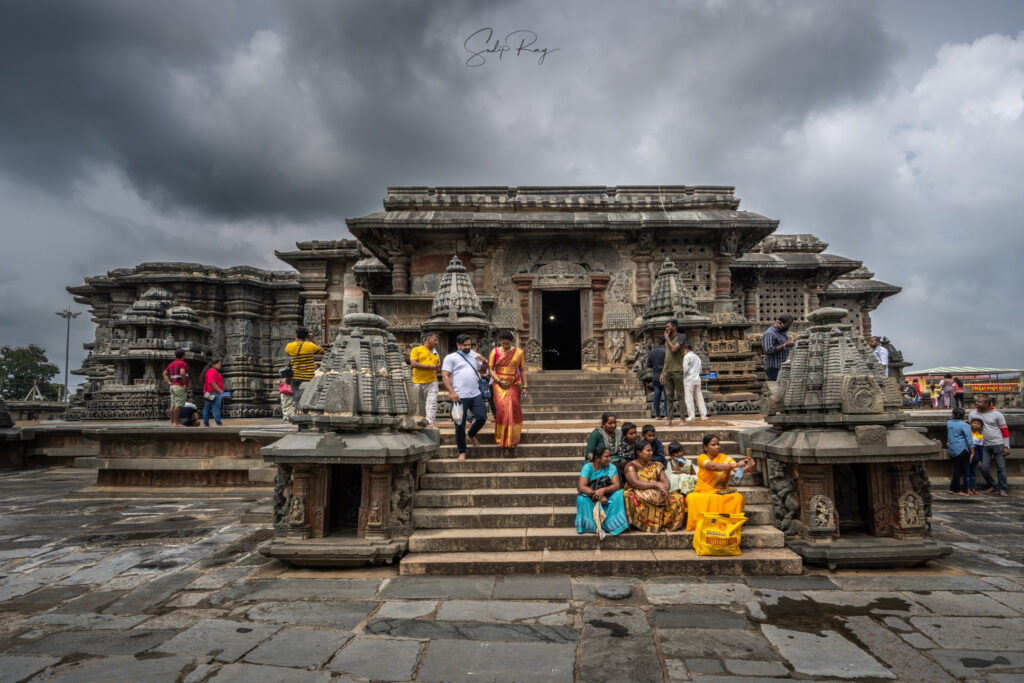
How to reach Belur:
- By train: Belur does not have any rail station. The nearest rail station is Hassan, which is 40 km away. Hassan, in turn, is well-connected with Bengaluru and Mysuru by train. From Hassan, you can take a bus to reach Belur.
- By flight: The nearest airports are Mangaluru (153 km) and Mysuru.
- By bus: Regular bus service is available from Bengaluru, Mysuru, Mangalore, Hospet, Hassan, and Chikmagalur.
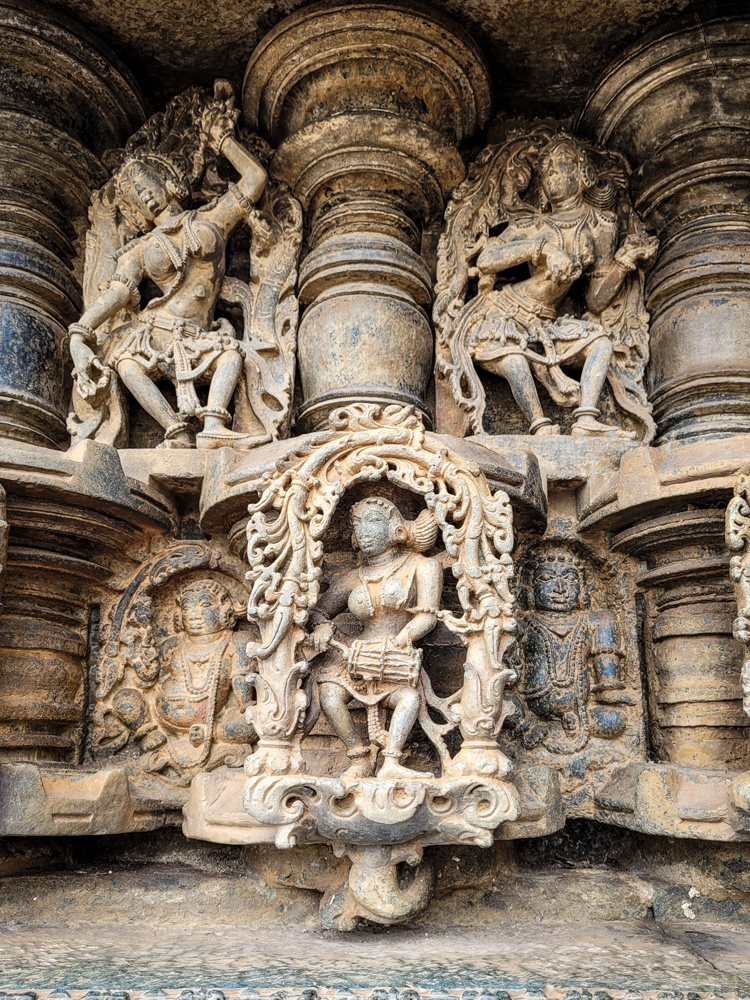
Where to stay in Belur:
The only decent place to stay in Belur is Karnataka Tourism’s Mayura Velapuri Belur. However, we suggest staying at either Bengaluru or Mysuru and visiting Belur as a day trip from there.
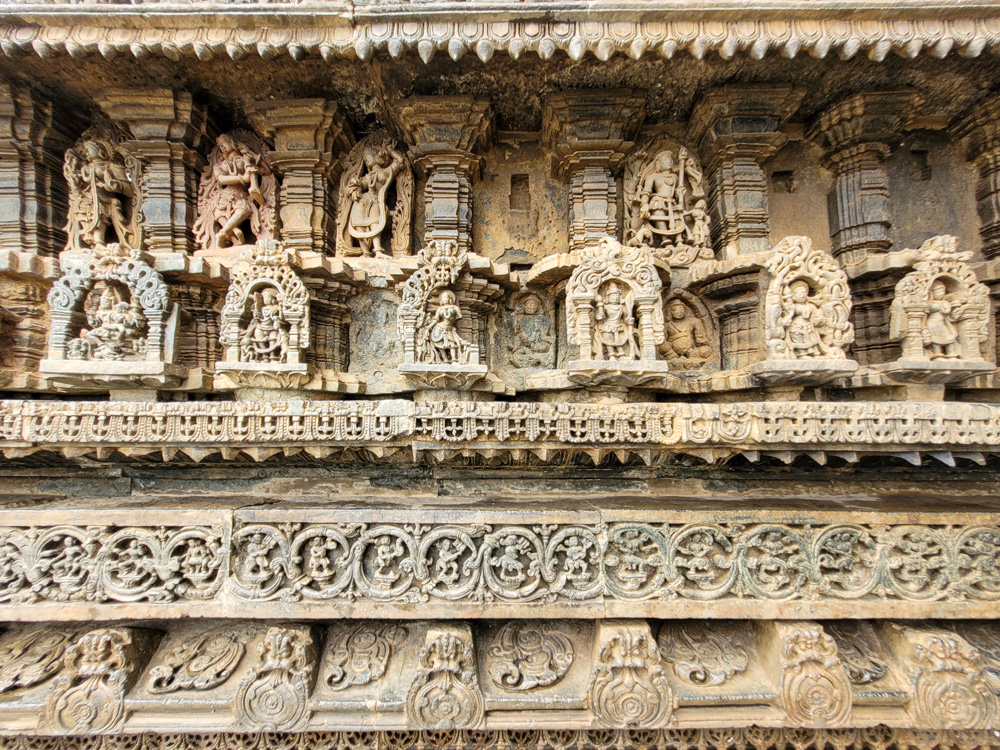
Who were the Hoysalas:
The Hoysala was one of the most powerful dynasties in southern India. They rose to power in the 11th century. They continued their reign up till the mid-14th century. According to legends, the mythical founder of the Hoysala dynasty was Sala. He once protected a meditating Jaina sage from a ‘yali’ or mythical leonine beast when the sage cried “Hoy, Sala” or “Strike, Sala”. The name of this royal line is derived from this.
The Hoysala’s first center of power was at Angadi, which eventually was transferred first to Velapura (today’s Belur) and finally to Dwarasamudra (Halebidu of present-day). Vinayaditya was the first to consolidate Hoysala’s power. The first autonomous Hoysala ruler, however, was Vishnuvardhana. He is also regarded as the greatest among the Hoysalas.
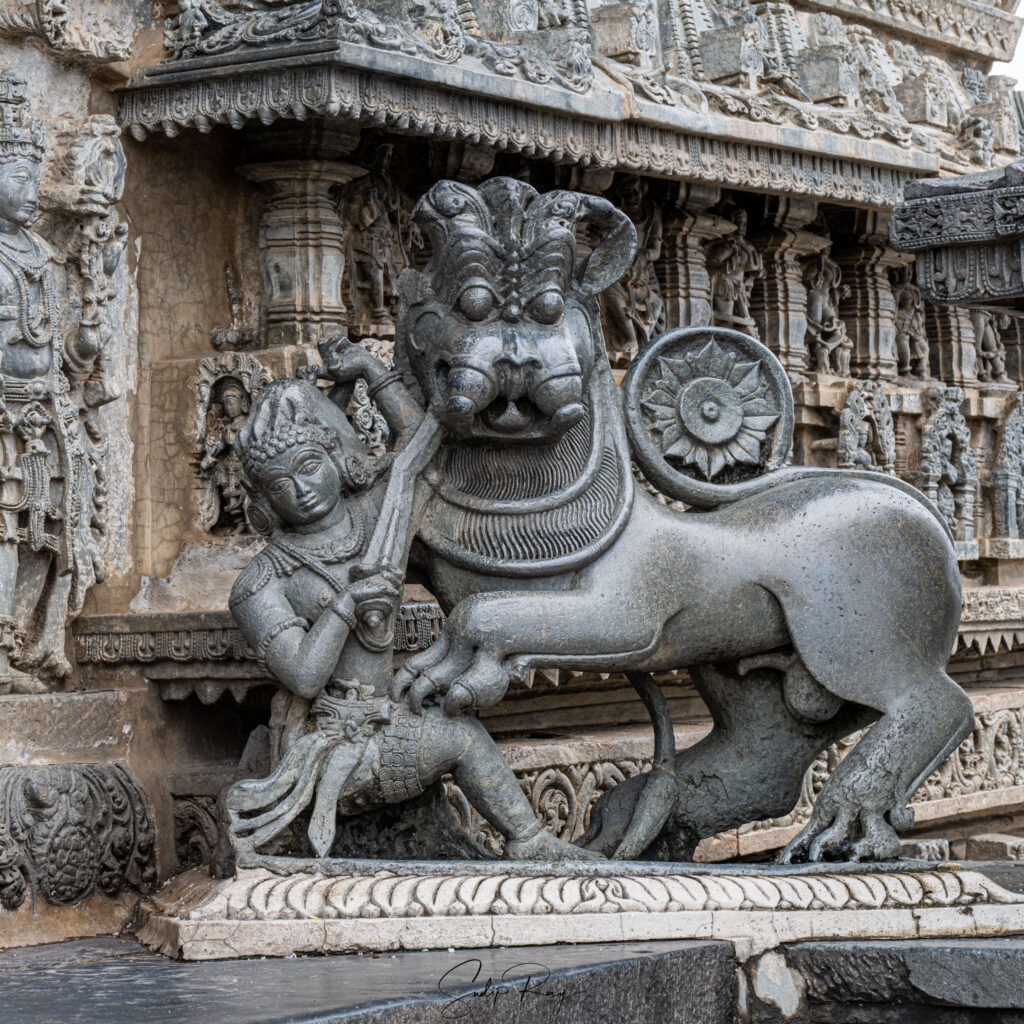
The Hoysala Empire was ransacked by Alauddin Khalji’s general Malik Kafur in 1311 CE, and later by the Tughluq army in 1326 CE.
Later, the Hoysala territories were incorporated into the Vijayanagara Empire.
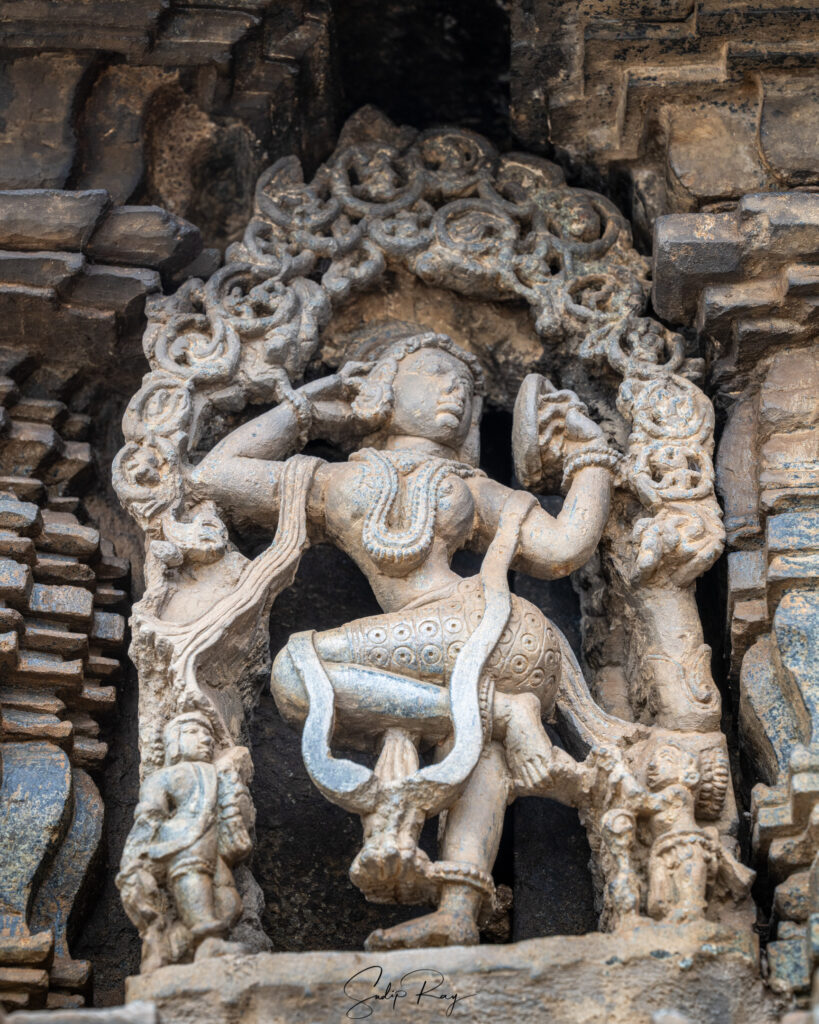
Features of Hoysala temple architecture:
The Hoysala architecture resulted from an amalgamation of the Dravida style of the Tamil area, the Vesara style from the Karnataka region, and the Bhumija variant of the Nagara style.
A distinctive feature of Hoysala temples is the stellate plan, one where the temple is built in a radiating pattern similar to that of a star. The walls of the temples are divided into multiple facets with angled points.
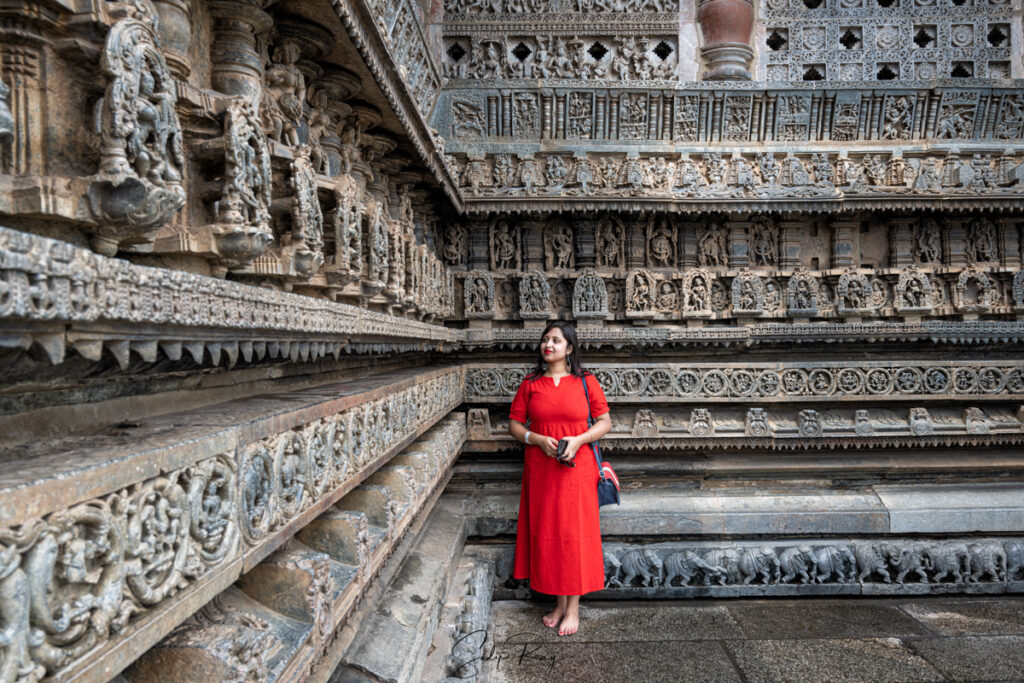
The essential ingredient of Hoysala temples is grey-green chloritic schist, often called soapstone. The stones are comparatively soft, thus helping the artists to carve the finest details on the temple walls. They are simultaneously robust enough.
One of the most interesting features of Hoysala architecture is the presence of names, titles, and affiliations of the sculptors and masons on the label inscriptions on Hoysala carvings. And, thus we came across the names of artists such as Dasoja, Nagoja, Malloja, and so on. This is in striking contrast with temples elsewhere in India where most craftsmen are left unacknowledged.
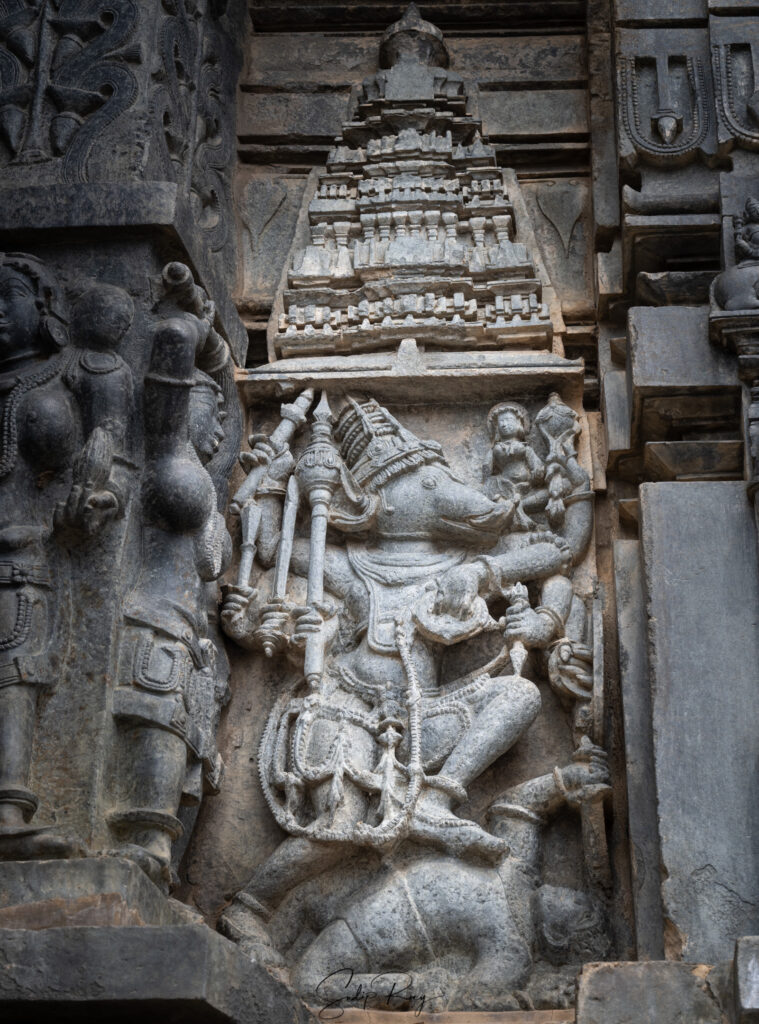
About Chennakesava Temple of Belur:
This astounding temple was commissioned by Vishnuvardhana in 1117 CE on the bank of the Yagachi river. It took three generations of Hoysala rulers and 103 years to complete the temple. Built in “ekakuta vimana” or single shrine style, it is dedicated to Chennakesava or “handsome Keshava”, a form of Vishnu.
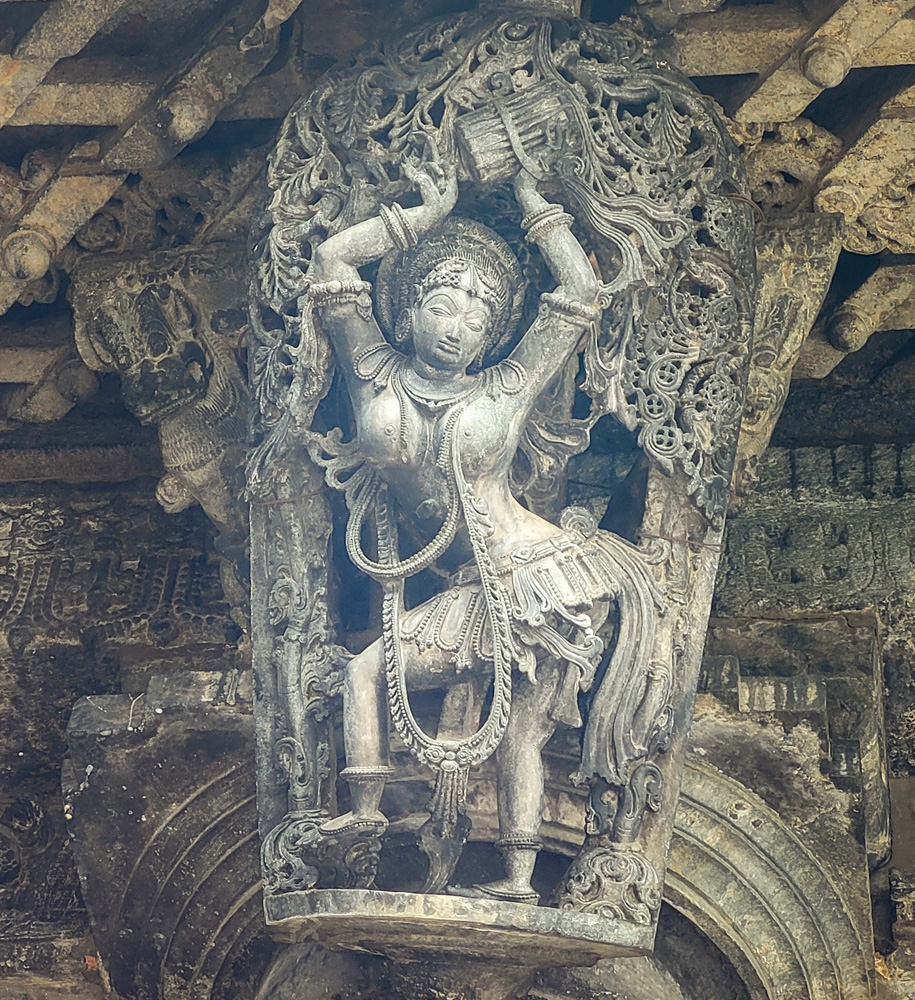
What to see at Chennakesava Temple:
As you enter the temple complex through the yellowish ‘Gopura’ which dates back to the Vijayanagara era, the onyx temple will surely take your breath away at the very first sight.
The sheer number of splendid and striking sculptures that adorn the exterior walls of the Chennakesava Temple is baffling. We, too, were initially puzzled about what to see and what to click. Hence, to ease your woe, we have compiled and explained in detail what not to miss while exploring this beautiful temple:
1. Mandapa brackets with ‘madanakai’ figures:
One of the main artistic highlights of Chennakesava Temple is the series of brackets depicting 38 ‘madanakai’ or maidens. These are cut-out figures, perched on the upper portion of the mandapa. These maiden figures are lively, and unmatched for their depiction of female beauty, dance, and music.
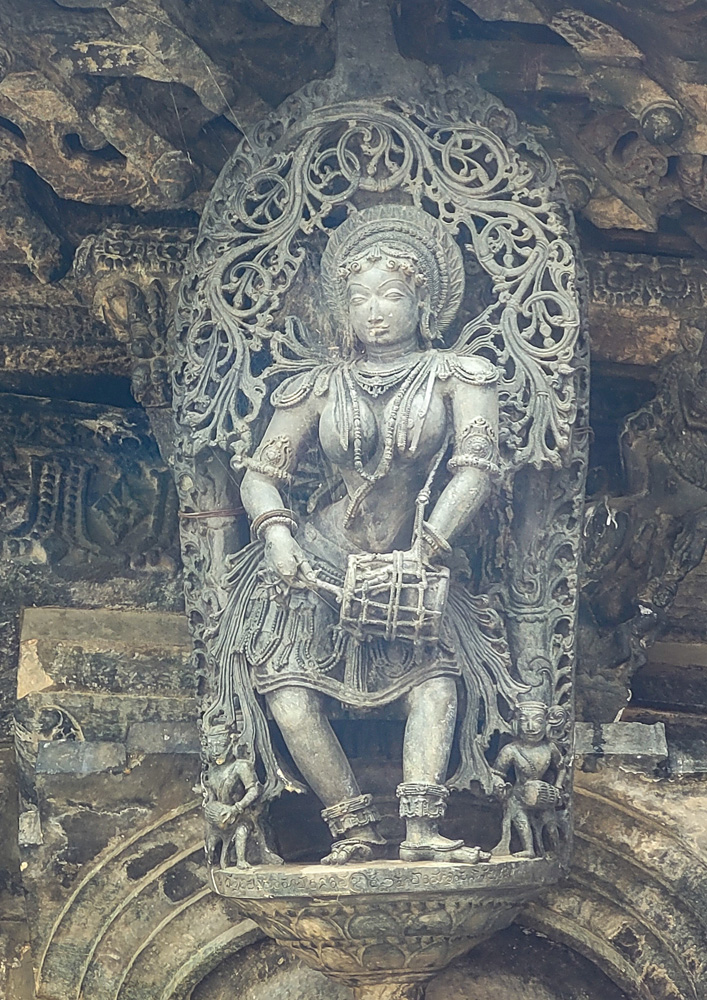
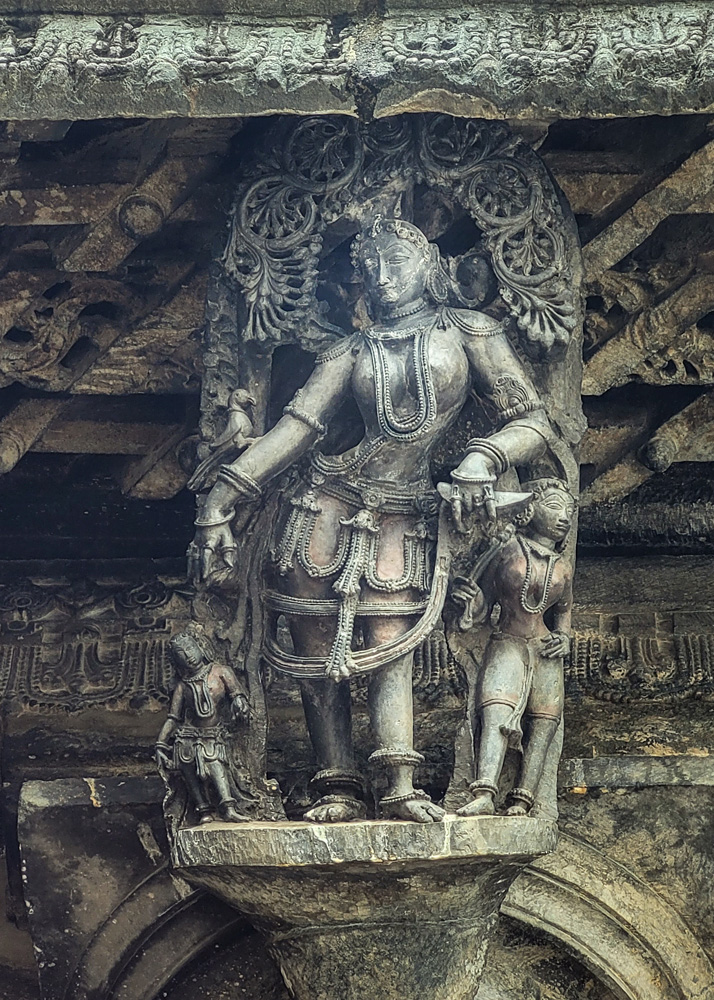
Look out for the maidens portrayed holding a fan and a betel leaf; rubbing the string of a ‘vina’ with a stick; gazing wistfully on a mirror; holding a parrot; squeezing out water from tress of hair after bath; aiming her hunting bow up; holding up a branch to strike a mischievous monkey tugging her garment.
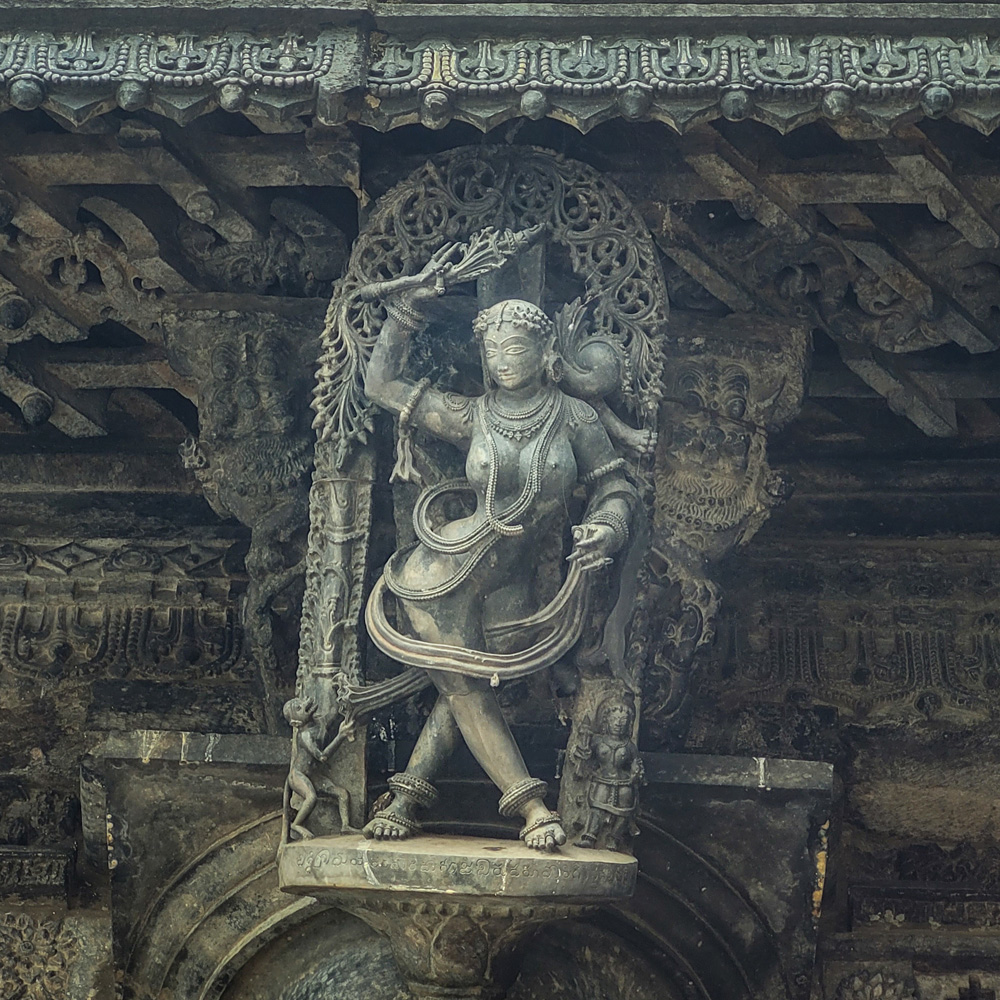
These ‘madanakai’ figures are truly poetry etched in stones. Gazing at them will surely make you wonder about the extraordinary skills of the artists.
2. Fascinating sculptures on the outer walls:
There are presumably 80 large sculptures around the exterior walls of the Chennakesava Temple. Vishnu appears most frequently in these wall sculptures, followed by Durga, Shiva, and Surya.
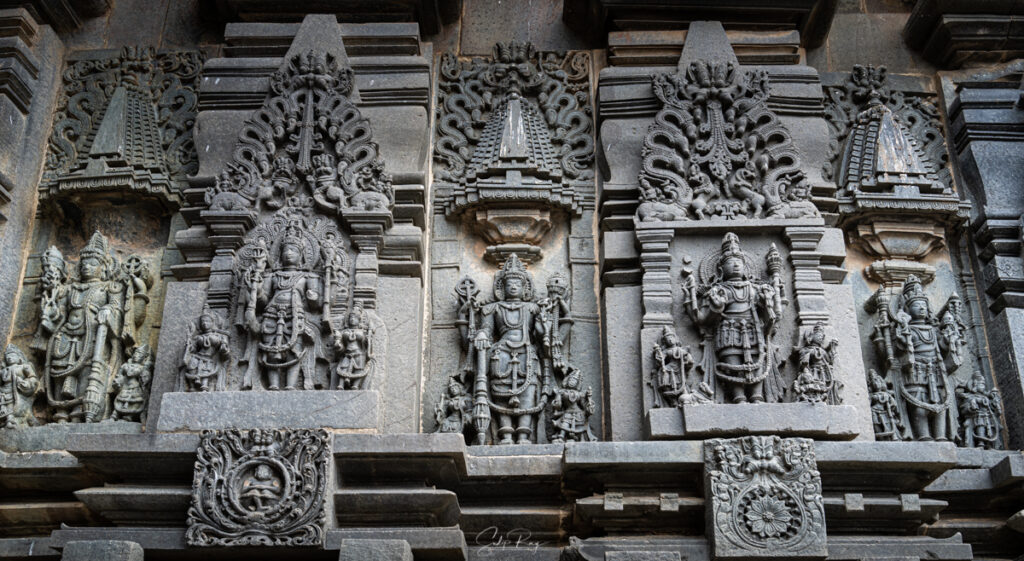
If you start clockwise from the left of the mandapa’s south entrance, you will come across some of the most visually arresting pieces of sculpture such as Harihara with Nandi on the left and Garuda on the right; Shiva lifting the demon Jalandhara on the point of his trident; a skeletal Kali; Vamana holding an umbrella; Ravana lifting up Kailasha; Durga spearing the demon Mahisha; triple-headed Brahma; Narasimha disemboweling Hiranyakashipu; Shiva dancing above an elephant demon; Bhikshatana, the naked wanderer; Arjuna aiming his arrow at the fish target above; and Varaha rescuing Bhudevi.
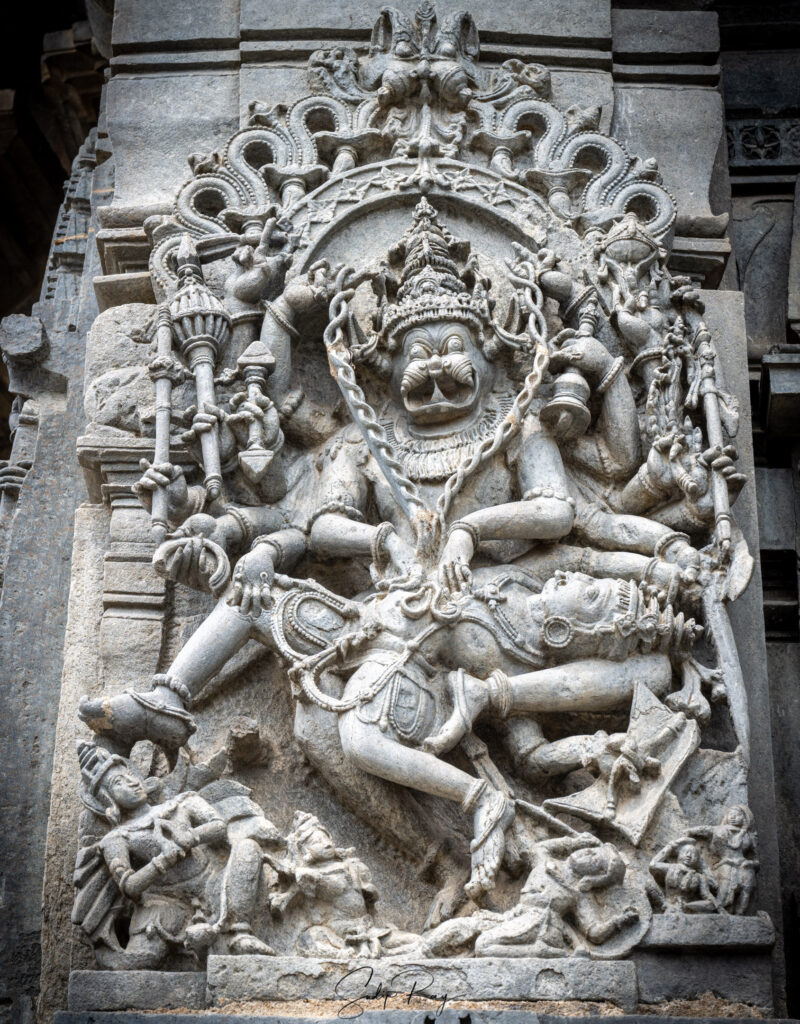
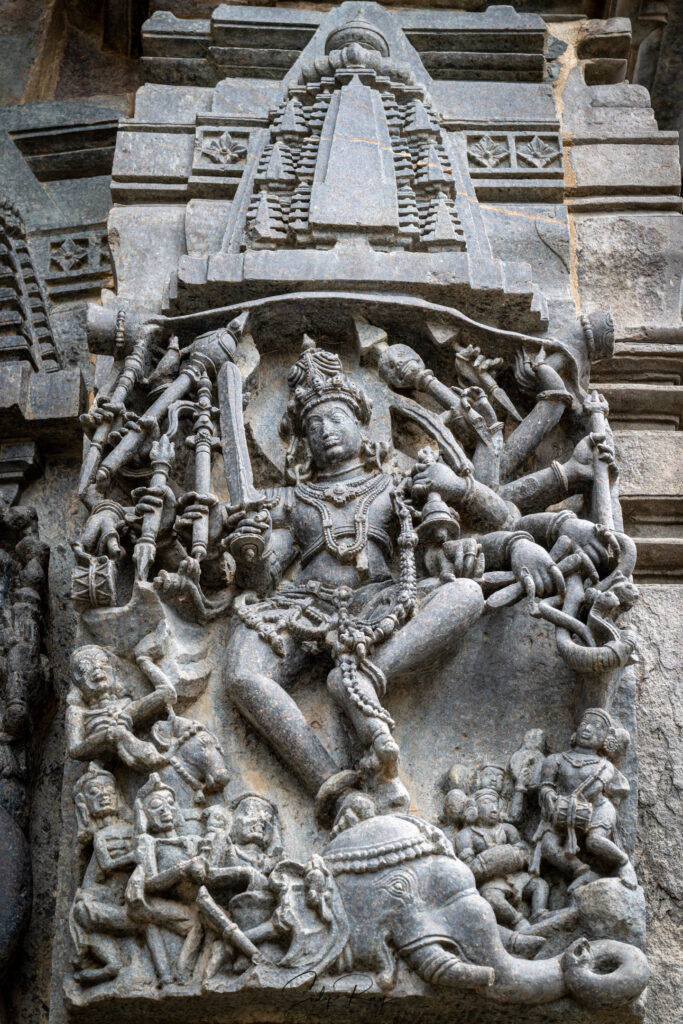
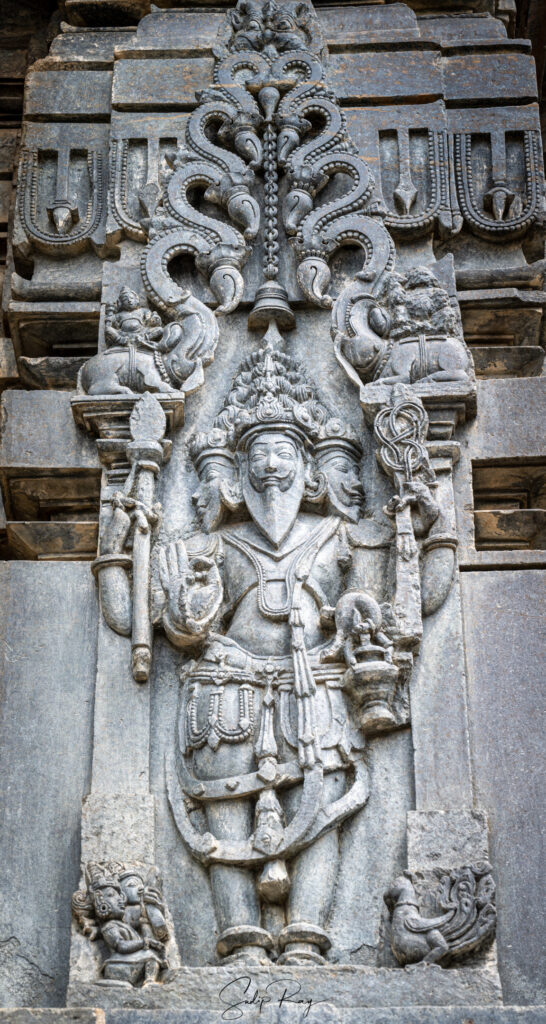
There are plenty of other outstanding sculptures all around this temple. Each will amaze you with its sheer details, proportions, and facial expressions.
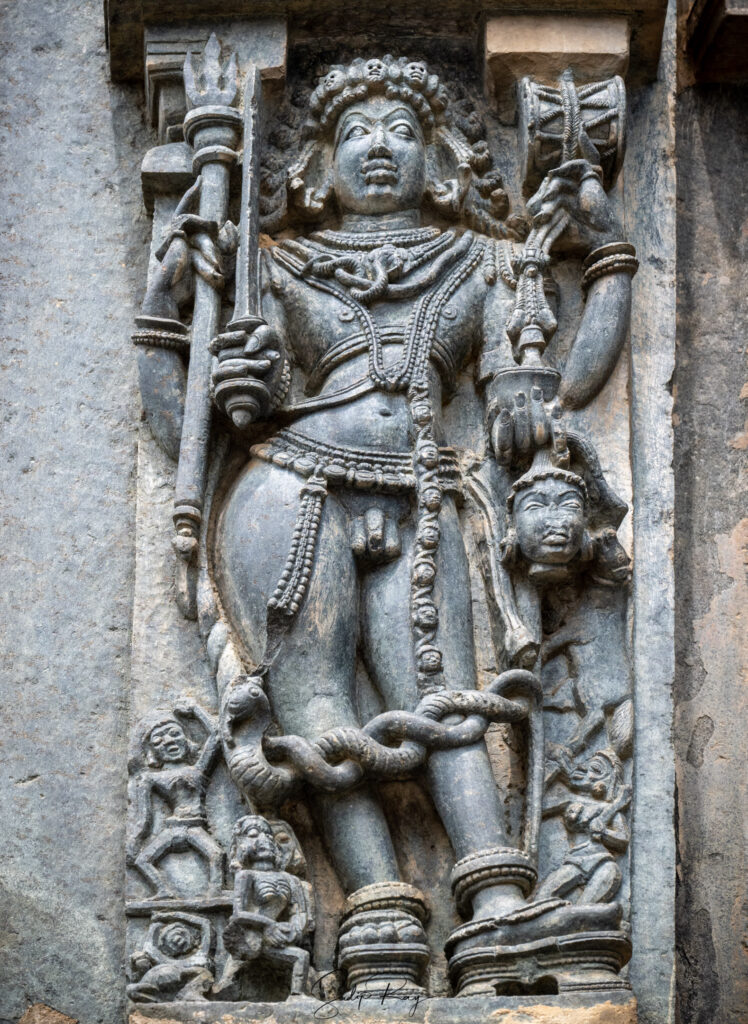
3. Screen panels:
Don’t miss the perforated screen panels near the entrances to the mandapa. These screen panels also portray scenes of the royal court as also mythological depictions. Start with the screen panel on the eastern entrance that depicts King Ballala II seated with his Queen Consort. Continue exploring the screen panels by moving to the northern entrance, which shows Hanuman and Garuda fighting over a Shiva linga as also Vishnu, with Lakshmi seated on his lap. As you reach the screen panels on the south, you will see illustrations of Trivikarma, Vishnu flanked by Garuda and Hanuman, scenes of Bhagvata Purana, and so on.
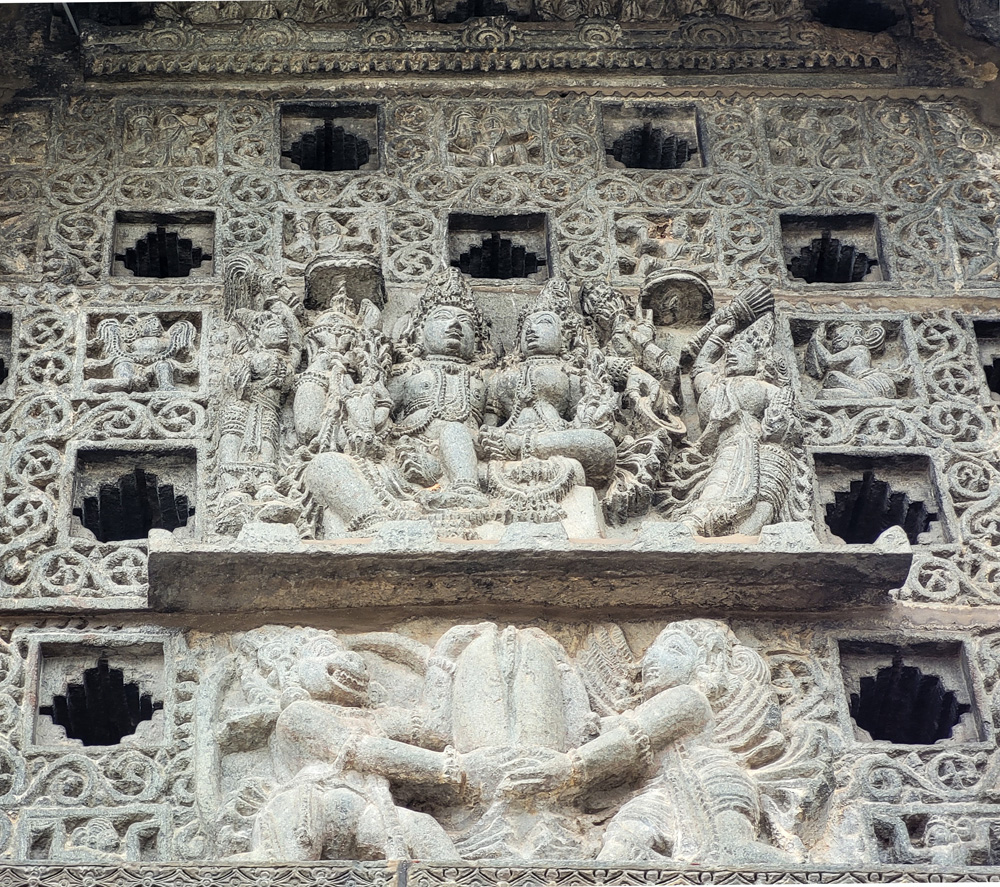
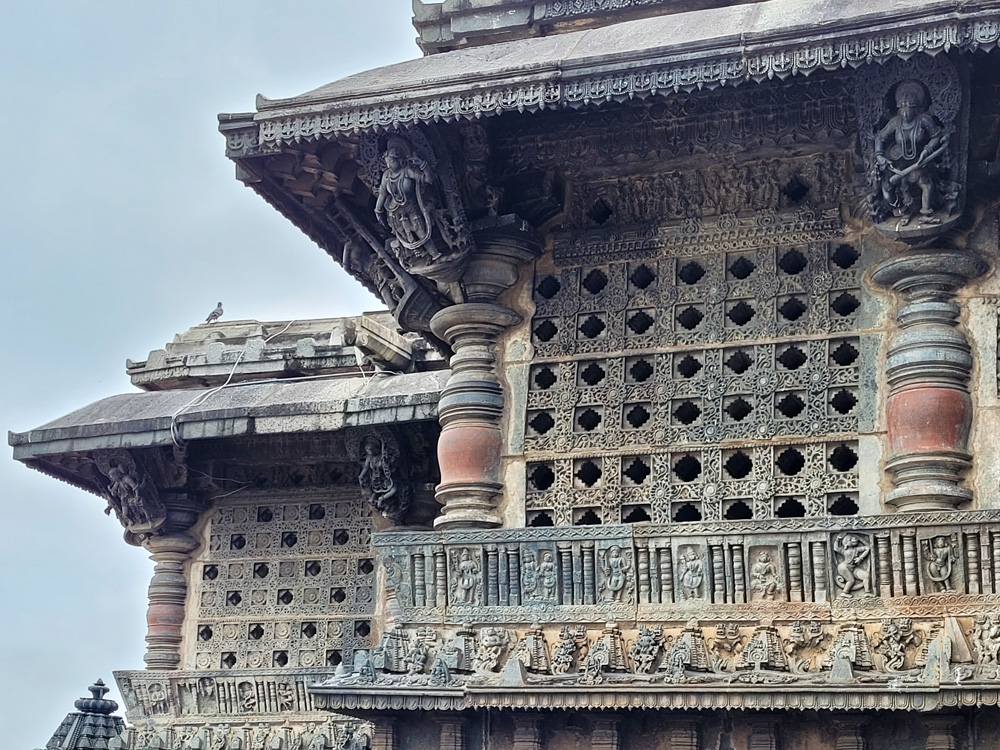
4. Subshrines:
The layout of Chennakesava Temple includes a host of sub-shrines. You will notice the double-story sub-shrines adjacent to the walls, and also smaller sub-shrines just beside the steps. They are, in fact, miniature forms of a complete temple.
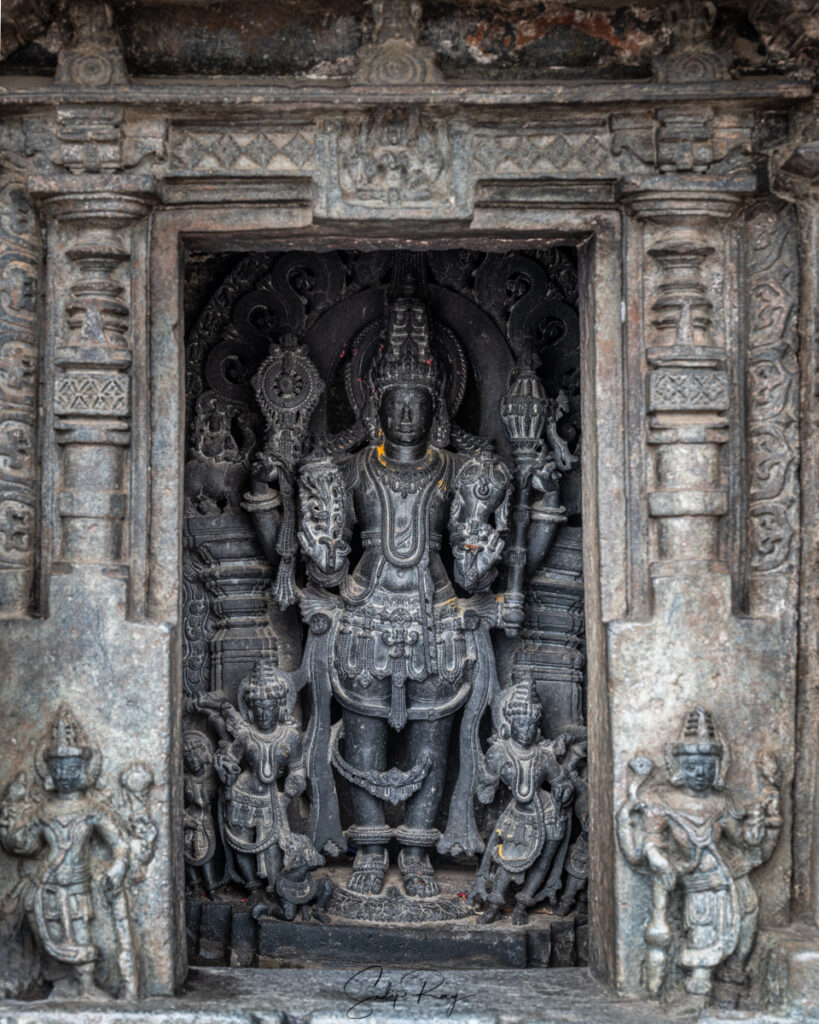
5. Interior of Chennakesava Temple:
Not only the exterior, but Belur’s Chennakesava Temple’s interior is also ornately crafted. You will be amazed by the finesse of the sculpture even inside this shrine.
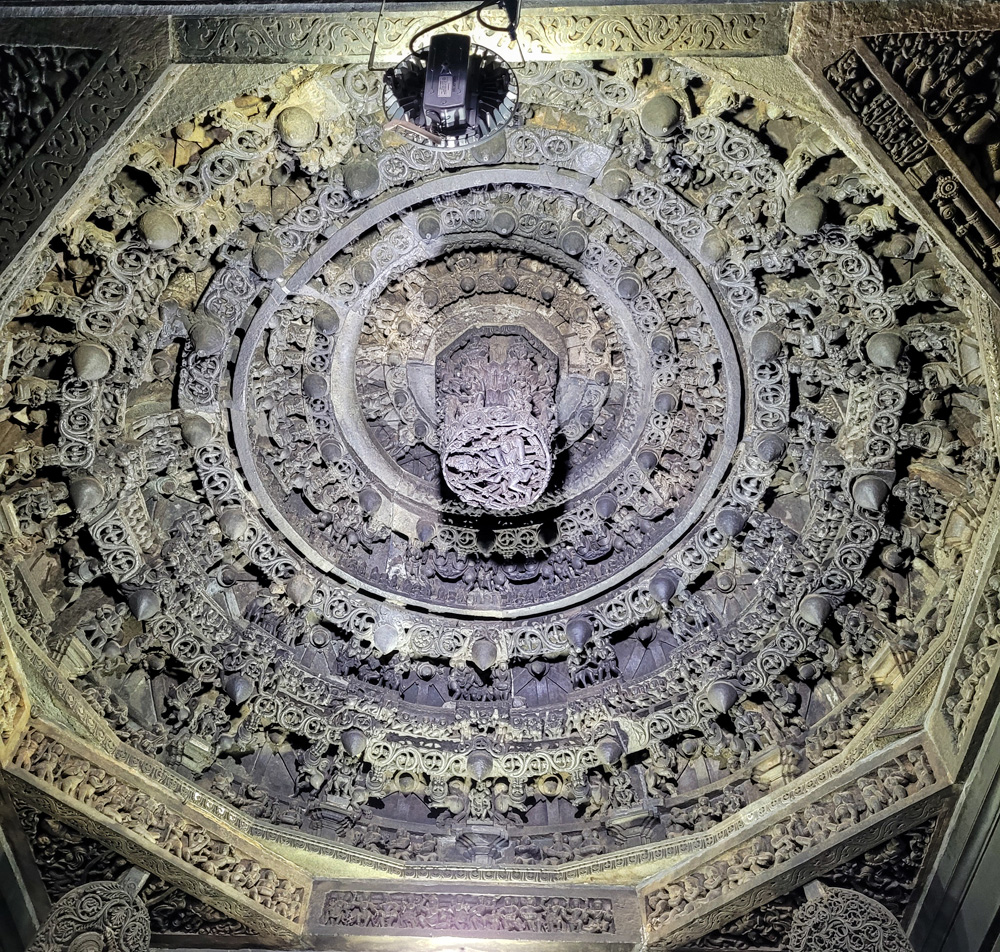
On entering inside, look up to admire the central dome-like ceiling. It is flanked by panels of four maidens, a la the ‘madanaika’ figures on mandapa brackets outside.
6. Other shrines and structures inside the complex of Belur’s Chennakeshava Temple:
Apart from the main temple of Chennakeshava, the complex has a host of other structures, such as:
A. Kappe Chennigaraya Temple:
Vishnuvardhana’s consort, Shantaladevi, commissioned this temple in 1117 CE. A ‘dvikuta’ style of temple, it was originally dedicated to Chennakeshava and Laksminarayana.
B. Saumyanayaki Temple:
It dates back to the Vijayanagara era. This is a goddess shrine, approached through a long, open hall with reused Hoysala schist columns.
C. Vajranarayana Temple:
This small temple was built towards the end of the 12th century. The figures on its outer walls are impressive. Don’t miss the panel depicting Bhima attacking Bhagadatta and his giant elephant.
D. Andal Shrine:
This shrine is dedicated to Andal, the Tamil poetess-saint, who gained recognition in the 16th – 17th centuries.
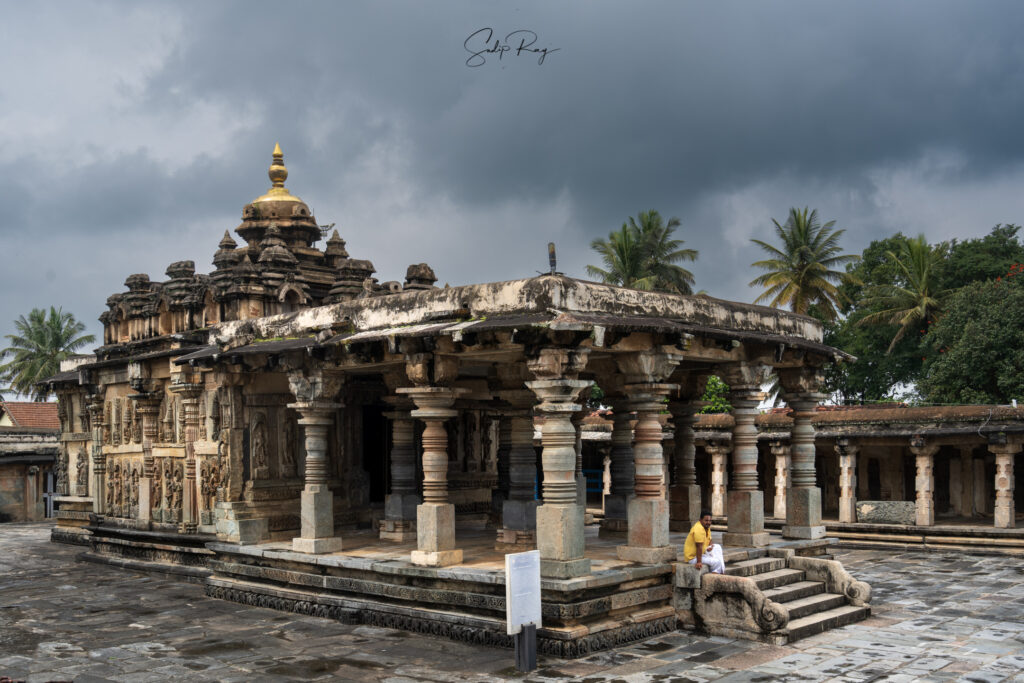
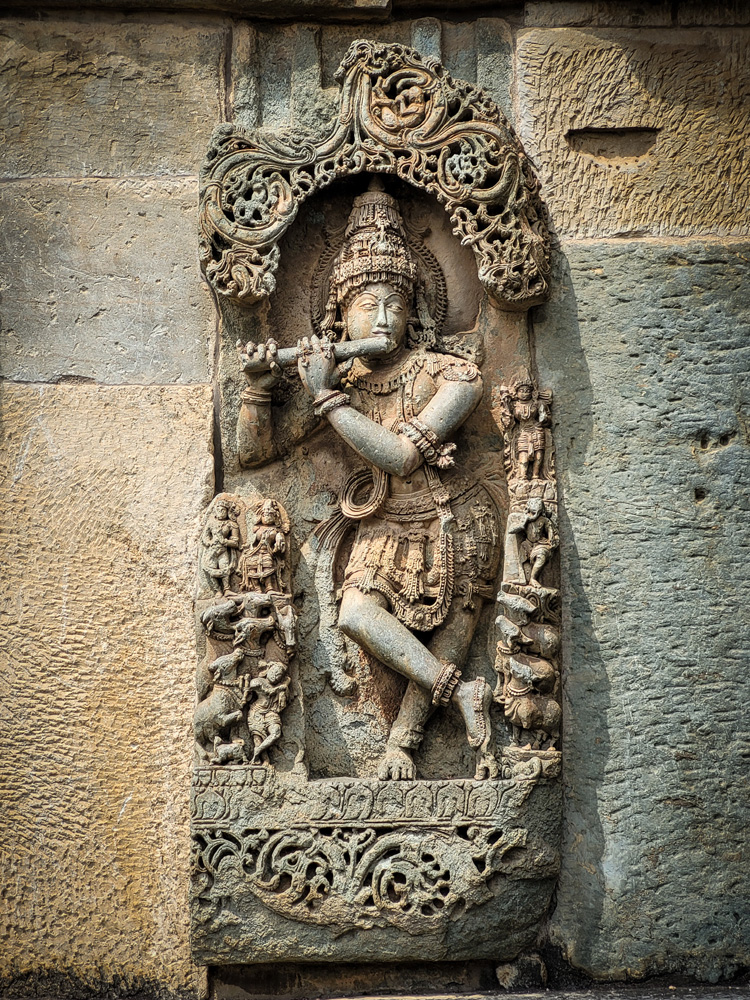
E. Stepped Tank:
This small, square steeped tank lies in the northeast corner of the expansive courtyard.
Things to know:
1. The temple remains open every day from 7-30 in the morning till 7-30 in the evening.
2. No entry fee is required here.
3. Combine Belur with Halebidu and Shravanabelagola for a complete experience.
4. You can also combine the Belur temple circuit with a visit to Chikamagalur.
5. Dress modestly, as this is an active temple.
6. Refrain from touching the sculptures. The artworks are best admired from a distance.
